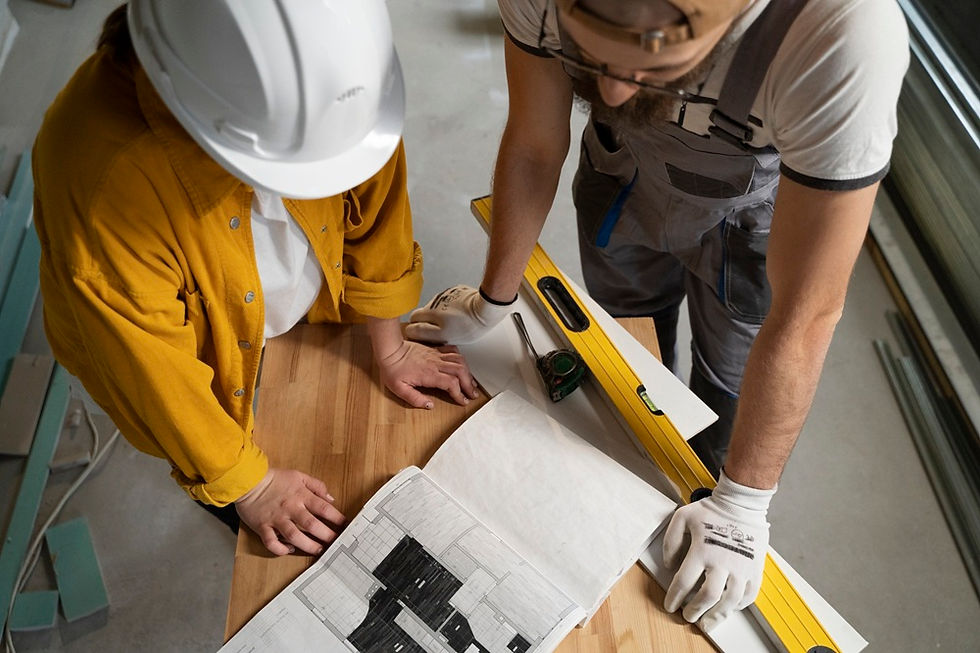Types of Concrete Slabs and its Many Usages
- Anna Brake
- Feb 5, 2021
- 3 min read
Updated: Jan 19, 2024
The strength of the foundation of a building ensures structural integrity. You will notice that modern builders emphasize concrete slabs as one of the best options for building the foundation. The concrete slab foundations are usually 4" to 6" thick at the center. Sometimes, the builder might place the concrete slab on the layer of sand particles, which will act as a cushion to drain out the water. There are always advantages and disadvantages to every material. The benefits of the concrete slabs surpass a few disadvantages, making it the ideal material for durable groundwork.

Types of Slab Foundations:
There are typically three broad categories for the foundations using the slabs made from concrete.
T-Shaped: It is a traditional structure that will support the house, where the ground freezes.
The builder will first put the footing below the frost line, wider than the sidewalls, to provide extra support.
Next, the workers will start the construction of the walls.
The last step is the placement of the concrete slabs in between the walls.
Slab-on-Ground Foundation: A single thick layer of concrete will form the slab in this type of foundation. The pouring of the slab will be thicker at the edges, which will aid in forming an integral footing.
It is perfect for areas where the ground will not freeze. The reinforced rods will thicken the edges.
Put the slab on a bed of crushed gravel, which will improve the drainage too.
The wire mesh casting in the concrete prevents chances of cracks.
The slab-on-grade type is usually monolithic that implies the pouring happens once only.
Frost Protected Foundation: The idea is feasible when you have a heated structure. The entire process involves using a couple of rigid and polystyrene insulated sheets, one of which will be on the external side of the foundation while the other lies flat on the gravel base, which prevents freezing. The insulation will retain the heat from the structure and prevent considerable heat loss from the edges of the concrete slabs.
It only requires one operation of pouring concrete.
Can provide the advantages of slab-on-grade method in the areas prone to frosting.
Different Usages of Concrete Slab:
Faster Construction: Do you know it takes a lot of time for the other construction materials to dry up? If you can speed up the drying process, then the entire project will proceed faster. The concrete slab takes minimum time to dry, so, the construction work can proceed smoothly without additional delays. But if you opt for pouring the concrete in the basement, then it will take much time to dry up.
Pest Protection: With the concrete slabs, you can protect the home from various insects and pests like termites, and rats as they can have open access in the house through wooden joists, small gaps, and cracks in the foundation. The exact fit of the slabs prevents any such opportunities.
Save Money: As you will notice, cost-saving is a big advantage of these slabs in the foundation. There will be no crawl space of a basement that the seller claims to build with a considerable amount.
The building type is close to the ground than the buildings which have crawl space or basements. So, it is the best suitable one for people with physical disabilities.
Conclusion
So, install these slabs for a strong foundation if the climate of the area suits the style. They are the simplest form of foundation that your home can have.




Comments